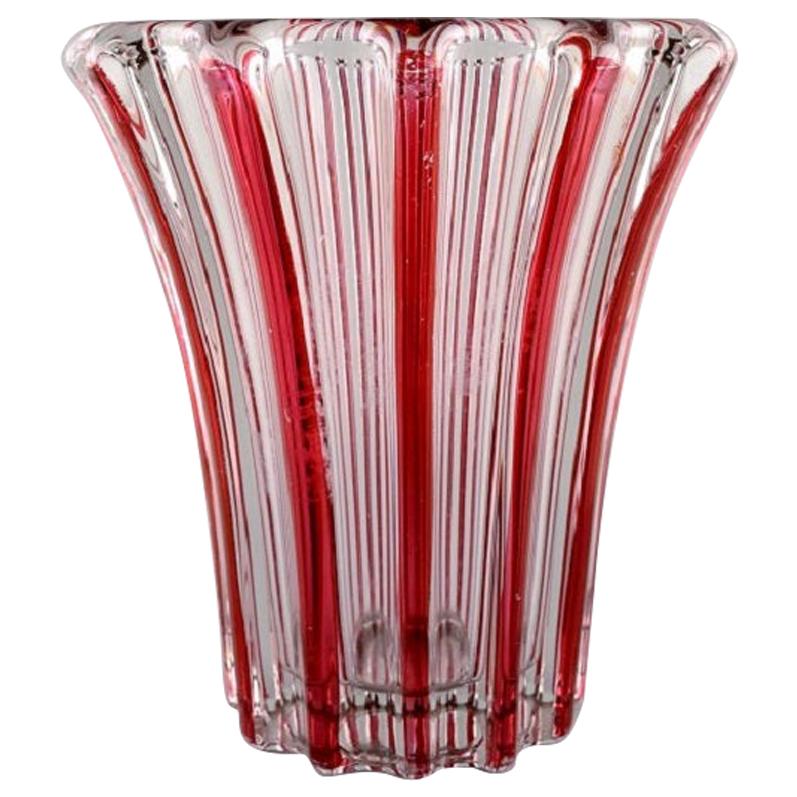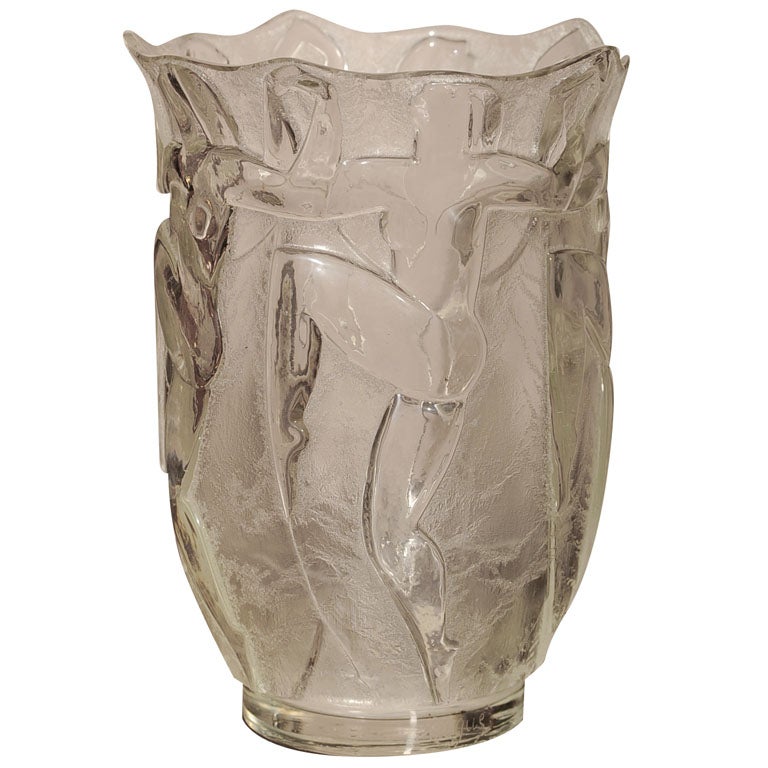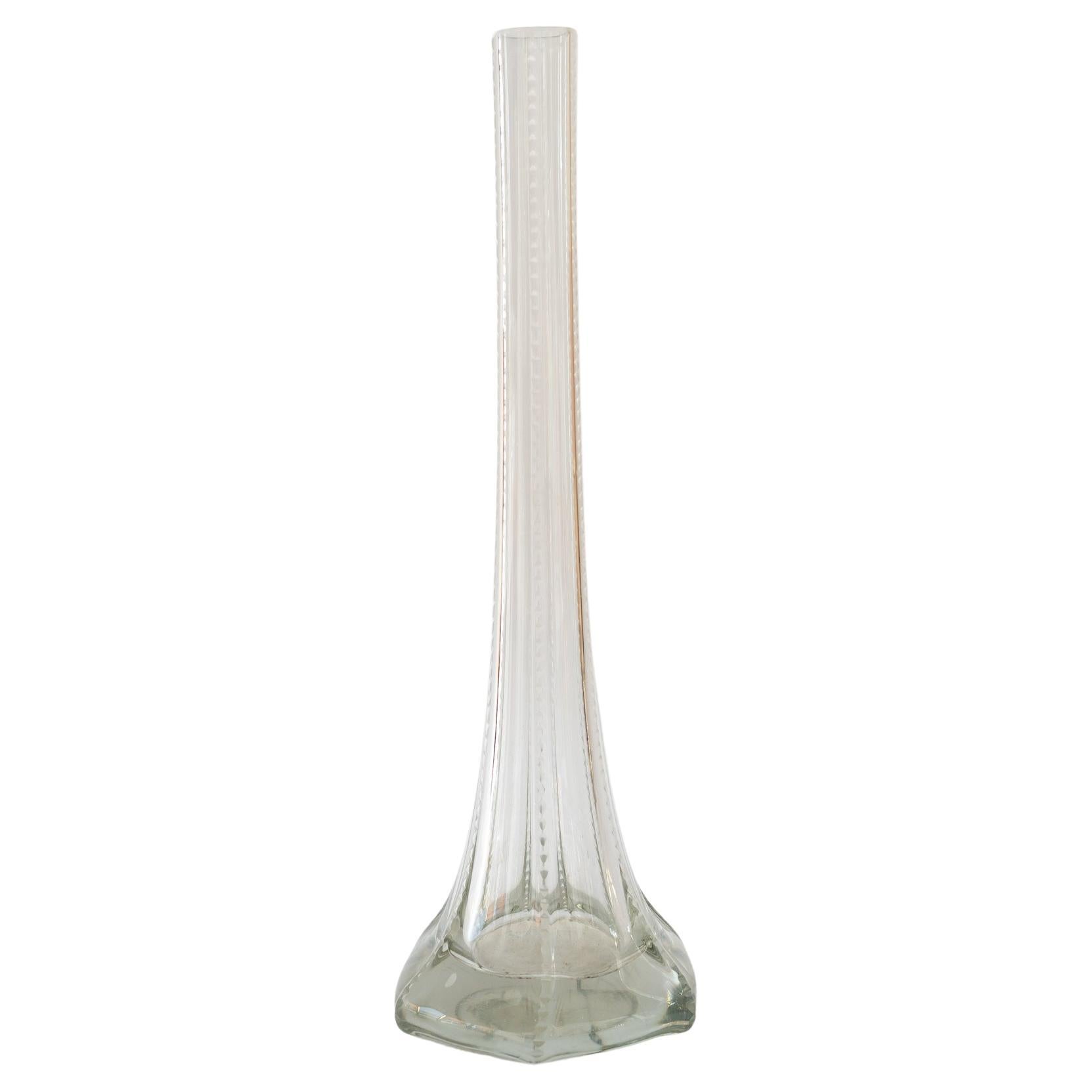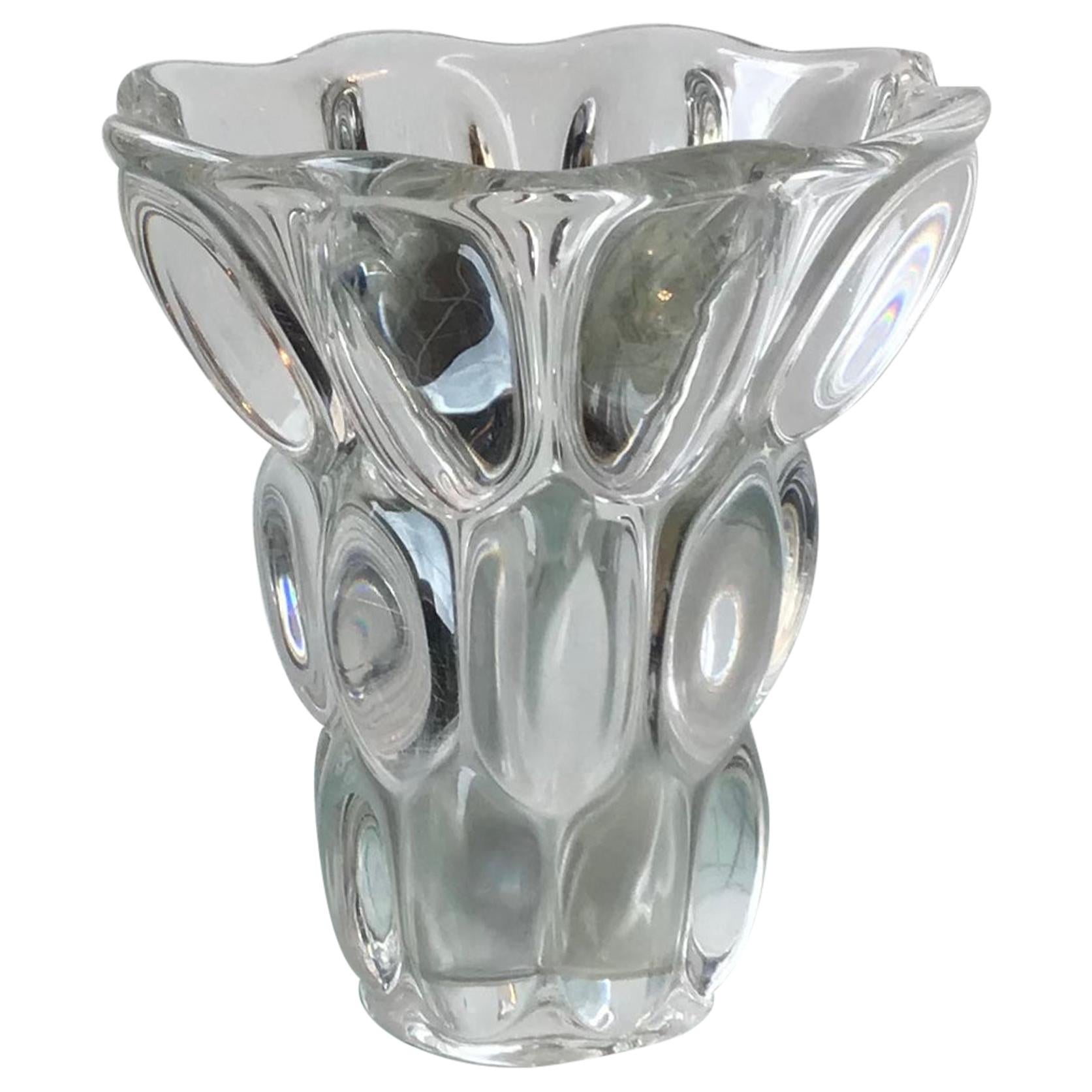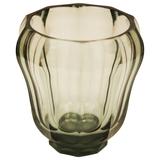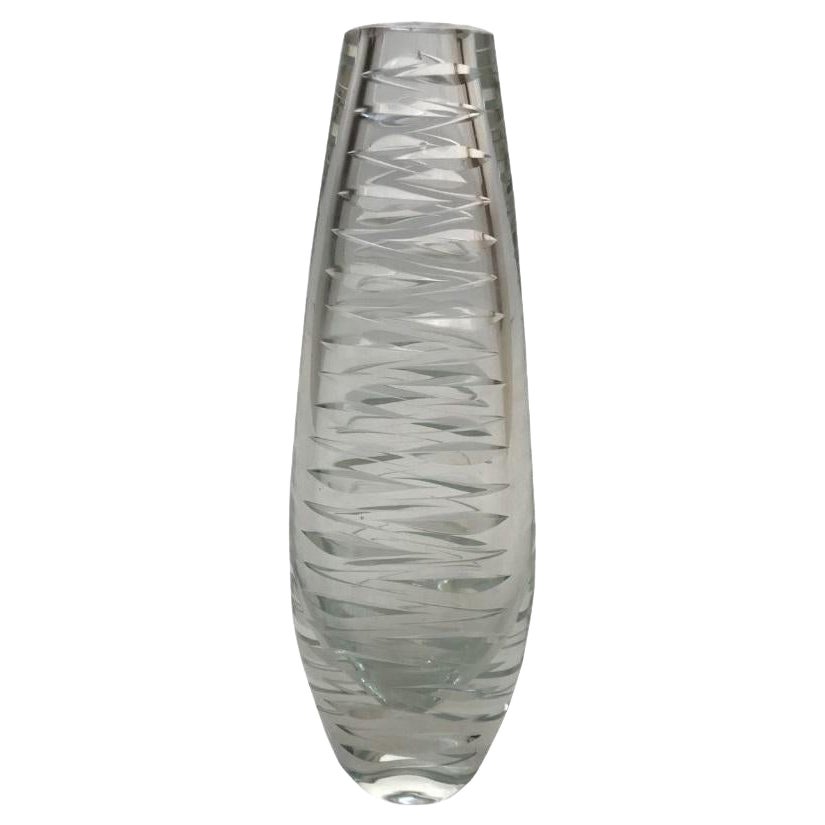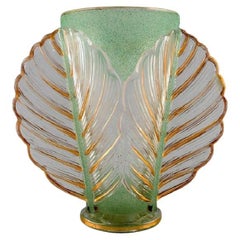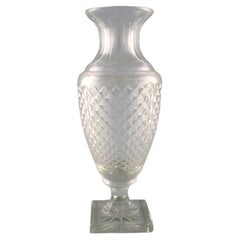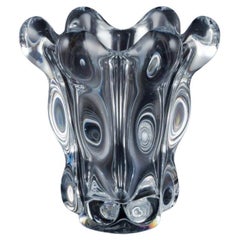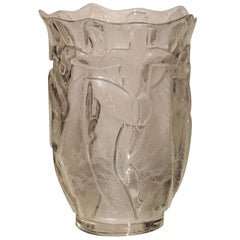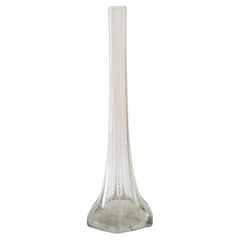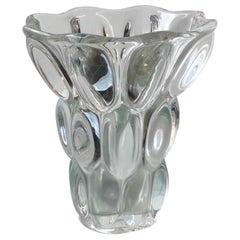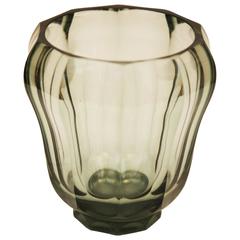Items Similar to Pierre Gire '1901-1984', aka Pierre d'Avesn, Art Deco Vase in Clear Art Glass
Want more images or videos?
Request additional images or videos from the seller
1 of 8
Pierre Gire '1901-1984', aka Pierre d'Avesn, Art Deco Vase in Clear Art Glass
$440
£332.33
€384.08
CA$617.17
A$686.45
CHF 359.27
MX$8,372.41
NOK 4,514.39
SEK 4,246.37
DKK 2,866.80
About the Item
Pierre Gire (1901-1984), aka Pierre D'Avesn. Art Deco vase in clear mouth blown art glass. 1940's.
Measures: 17 x 14.5 cm.
In very good condition.
Pierre Gire (1901-1984), aka Pierre D'Avesn.
In the beginning, at 14 years old, he worked at Rene Lalique's for 10 years. During this period, he designed Lalique's famous "Serpent" vase as well as the "Tourbillons" vase, two of the most highly-priced and extremely collectable pieces by "Lalique".
In 1926, he left René Lalique and created his own models. His pieces were made by Cristallerie de Saint-Rémy.
- Dimensions:Height: 6.7 in (17 cm)Diameter: 5.52 in (14 cm)
- Style:Art Deco (In the Style Of)
- Materials and Techniques:
- Place of Origin:
- Period:
- Date of Manufacture:1940s
- Condition:
- Seller Location:København, DK
- Reference Number:1stDibs: LU1041218821872
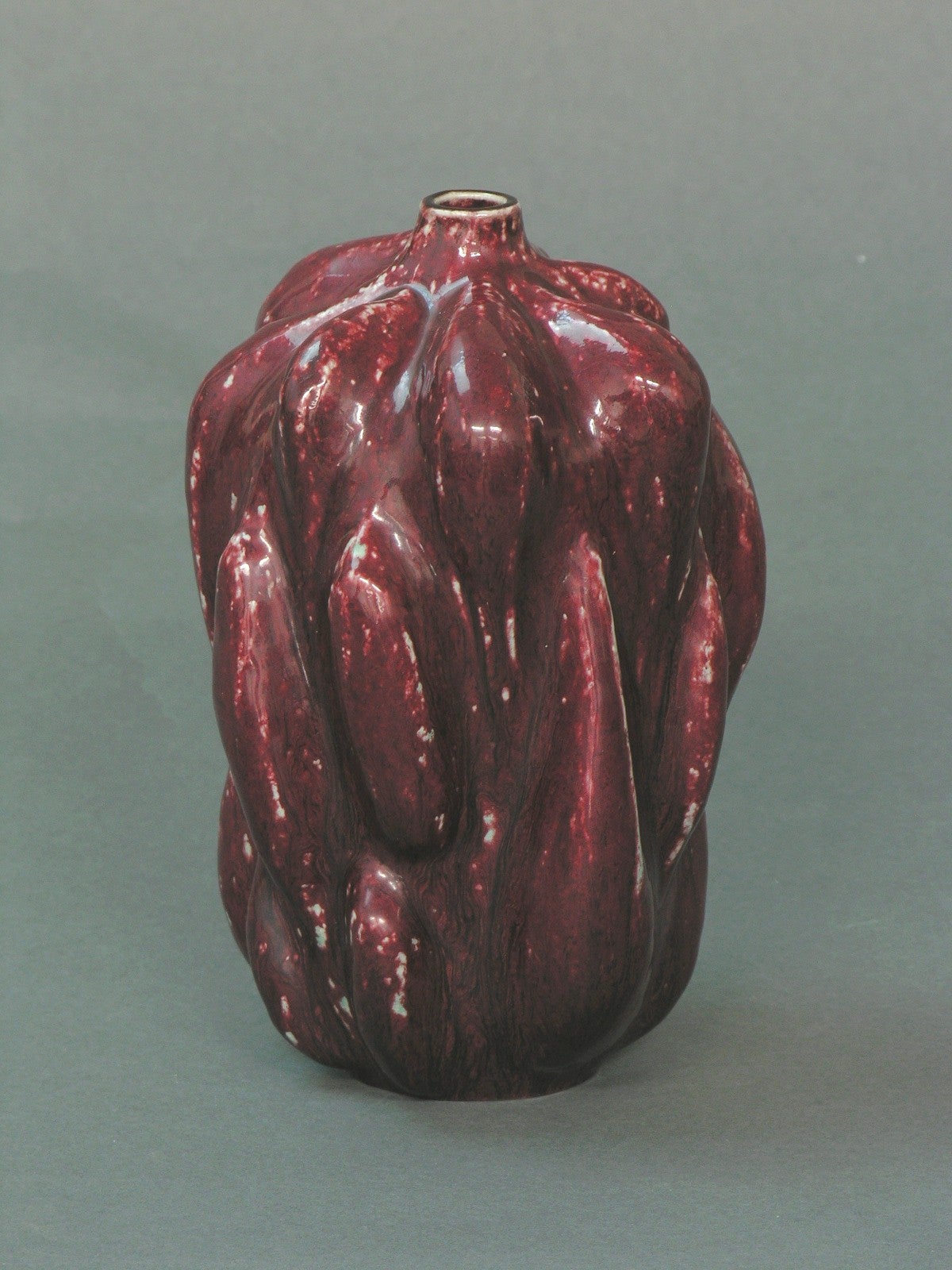
About the Seller
4.8
Platinum Seller
Premium sellers with a 4.7+ rating and 24-hour response times
Established in 1999
1stDibs seller since 2014
3,095 sales on 1stDibs
Typical response time: 7 hours
- ShippingRetrieving quote...Shipping from: København, Denmark
- Return Policy
Authenticity Guarantee
In the unlikely event there’s an issue with an item’s authenticity, contact us within 1 year for a full refund. DetailsMoney-Back Guarantee
If your item is not as described, is damaged in transit, or does not arrive, contact us within 7 days for a full refund. Details24-Hour Cancellation
You have a 24-hour grace period in which to reconsider your purchase, with no questions asked.Vetted Professional Sellers
Our world-class sellers must adhere to strict standards for service and quality, maintaining the integrity of our listings.Price-Match Guarantee
If you find that a seller listed the same item for a lower price elsewhere, we’ll match it.Trusted Global Delivery
Our best-in-class carrier network provides specialized shipping options worldwide, including custom delivery.More From This Seller
View AllPierre Gire '1901-1984', Aka Pierre D'Avesn, Art Deco Vase, 1940s
Located in København, Copenhagen
Pierre Gire (1901-1984), aka Pierre d'Avesn. Art Deco vase in pink and clear art glass, 1940s.
Measures: 16,5 x 15,5 cm.
In very good condition.
Pierre ...
Category
Vintage 1940s French Art Deco Vases
Materials
Art Glass
Pierre Gire, Aka Pierre d'Avesn, Rare Art Deco Vase in Art Glass
Located in København, Copenhagen
Pierre Gire (1901-1984), aka Pierre d'Avesn.
Rare Art Deco vase in clear and green mouth-blown art glass with gold decoration. 1930s.
Measures: 22 x 20.5...
Category
Vintage 1930s French Art Deco Vases
Materials
Art Glass
Baccarat, France, Art Deco Vase in Clear Crystal Glass, 1930s
Located in København, Copenhagen
Baccarat, France. Art Deco vase in clear crystal glass.
1930s.
Measures: 28 x 11 cm.
In excellent condition.
Category
Vintage 1930s French Art Deco Vases
Materials
Art Glass
Art Vannes, France. Art glass vase in crystal. Art Deco.
Located in København, Copenhagen
Art Vannes, France. Art glass vase in crystal. Art Deco.
Clear glass. Handmade.
1930s/40s.
Marked.
Perfect condition.
Dimensions: H 15.0 cm. x D 13.8 cm.
Category
Vintage 1930s French Modern Vases
Materials
Crystal
Large Art Deco Lalique Art Glass Vase
Located in København, Copenhagen
Large Art Deco Lalique art glass vase.
Signed: Lalique, France.
Size: 34 cm. high. 14 cm. in diameter.
In perfect condition.
Category
Vintage 1930s French Art Deco Glass
$880 Sale Price
20% Off
Josef Inwald, Large Art Deco "Dans la forêt" Vase in Art Glass, 1930s
Located in København, Copenhagen
Josef Inwald. Large Art Deco "Dans la forêt" vase in art glass, 1930s.
Measures: 26.5 x 19 cm.
In good condition.
Category
Vintage 1930s Czech Art Deco Glass
Materials
Art Glass
You May Also Like
Art Deco Glass Vase by Verrerie Degue, David Gueron
By David Gueron Degue, Verrerie D'Art Degué
Located in Bridgewater, CT
French Art Deco glass vase molded with dancing female figures, from circa 1930, inscribed Degue with artist's cartouche on the underside.
Category
Vintage 1930s French Vases
Materials
Glass
Art deco clear glass vase vienna around 1920
Located in Wien, AT
Art deco clear glass vase vienna around 1920
Original condition
Category
Vintage 1920s Austrian Art Deco Vases
Materials
Glass
France Vase Bugnoni, 1940 Glass, France
By Francois-Jacques Boeri
Located in Milano, IT
France vase Bugnoni 1940 glass, France.
Category
Vintage 1940s French Other Vases
Materials
Glass
Art Deco Bohemian Crystal Glass Vase
Located in Vienna, AT
Art Deco bohemian crystal glass vase.
Beautiful condition but a small chip on the base
Category
Vintage 1930s Czech Art Deco Vases
Materials
Crystal
$190 Sale Price
52% Off
Vase in Crystal, 1950, France
Located in Ciudad Autónoma Buenos Aires, C
Crystal.
We have specialized in the sale of Art Deco and Art Nouveau and Vintage styles since 1982.
Why are there so many antiques in Argentina?
In the 1880 – 1940 there was a grate wave of immigration encouraged by the periods of war that were taking place.
1st World War took place between 1914 and 1918
2nd World War took place between 1939 and 1945
The immigrants options were New York or Buenos Aires. Tickets were cheap and in Buenos Aires they were welcomed with open arms, as it was a country where everything was still to be done.
Argentina was the country of new opportunities, labour was needed and religious freedom was assured, in many cases the of the family travel first until they were settled and then the rest of the family members join them.
In the immigrant museum “Ellis Island Immigrant Building” in New York you can se the promotional posters of the boats that would take them to a new life.
Between the years 1895 and 1896, Argentina had the highest DGP (gross domestic product) per capita in the world according to the Maddison Historical Statistics index, this situation arose due to the large amount of food being exported to European countries, which were at war.
The Argentinean ships left the port of Buenos Aires with food, but they returned with furniture, clothes and construction elements, (it´s common to see this the old buildings of the historic neighbourhood of San Telmo, the beams with the inscription “Made in England)”, as well as many markets that were built in Buenos Aires, such us the San Telmo Market, whose structure was brought by ship and afterwards assembled in 900 Defensa Street.
With the great influence of European immigrants living in the country, the children of the upper classes travelled to study in France, resulting in the inauguration of “La Maison Argentinienne”, on 27th of June 1928, in the international city of Paris, which hosted many Argentinians that were studying in Frace.
It´s the fourth house to be built after France, Canada and Belgium, being the first Spanish-speaking one. Still in place today (17 Bd Jourdan, 75014, Paris, France). Many of the children of these wealthy families who attended international art exhibitions, museums and art courses abroad, took a keen interest in the European style. This is why Buenos Aires was at the time referred as “The Paris of South America”.
Between the years 1890 and 1920 more than a hundred Palaces were built on Alvear Avenue the most exclusive avenue in Buenos Aires. Today some of these palaces have been transformed into museums, hotels and embassies.
In the year 1936, the Kavanagh building was inaugurated, it was the tallest reinforced concrete building in South America.
During 1994 the American Society of Civil Engineers distinguished it as an “international engineering milestone”, and it´s now considered a World Heritage of Modern Architecture.
At the time was common to hire foreign architects such as Le Corbusier, who visited Buenos Aires/Argentina in 1929 and in 1948 he drew up the blueprints for a house built in La Plata City (which was declared a World Heritage Site).
In 1947, the Hungarian architect Marcelo Breuer designed “Parador Ariston” in the seaside city of Mar del Plata. After an Argentinean student at Harvard University convinced him to come to Argentina. He worked on an urban development project in the Casa Amarilla, area of La Boca.
The Ukrainian architect, Vladimiro Acosta, arrives in Argentina in 1928 and worked as an architect until que moved to Brazil.
Antonio Bonet, a Spanish architect who worked with Le Corbusier in Paris, arrives in Argentina in 1937, where he carried out several architectural works and in 1938 designs the well-known BFK chair.
Andres Kálnay, of Hungarian origin, made around 120 architectural masterpieces, among which the former Munich brewery stands out, he even made the furniture’s design.
The German architect, Walter Gropius, director of the Bauhaus, lived in Argentina, where he wrote articles for “Sur” magazine and founded in Buenos Aires, an architectural firm with Franz Möller, who was also an architect, where he built two houses.
At the same time several famous designers decided to immigrate to Argentina, among them we can find the well-known French designer, Jean-Michel Frank, who arrived in the country in 1940 and also worked for the Rockefeller family.
Special pieces were made, which were sold exclusively in the country, such as the well-known German company “WMF”, who sold their products by catalogue, which were chosen by the ladies of High Society in the list of wedding gifts, as well as the pieces designed by Christofle.
The Swiss sculptor Alberto Giacometti, made special pieces for Argentinean mansions.
In 1904 the first Jansen branch outside Paris was established in Buenos Aires, as the Argentinean clientele demanded a large amount of furniture, from the end of the 19th century to the Mid-20th Century.
In 1970, the brand Rigolleau Argentina made pieces authorised by Lalique.
The brands Maple and Thompson also set up shop in the country.
The French plastic artist, Marcel Duchamp moved to Argentina in 1918-1919.
Glass signed Gallé, Charder, Leverre, Schneider, Muller and other French firms. They were bought in flower shops and were given to ladies with beautiful floral arrangements.
Some furniture manufacturers travelled to international fairs and bough the patterns to produce the furniture in Argentina, such as the furniture firm Englander and Bonta, who bought the patterns ins Italy.
It is worth mentioning that in Argentina we have the largest Community of Italians outside...
Category
Vintage 1940s French Art Deco Vases
Materials
Crystal
Art Deco Murano Glass Vase, 1930s
Located in Palermo, IT
Art Deco Murano glass vase, 1930s
Intact and in excellent condition, it has always belonged to my family. Very small air bubbles can be glimpsed inside the...
Category
Vintage 1930s Italian Vases
Materials
Murano Glass
More Ways To Browse
French Clear Glass Vases
Art Deco Clear Glass Vase
Used Rene Pierre
Rene Pierre
Serpent Vase
Avesn Vase
Lalique Serpent
Lalique Serpent Vase
Lalique Tourbillon
Lalique Tourbillons Vase
Tourbillons Vase
Italy Glass Purple
Red Vase With Flowers
Gilded Vases
Italian Brown Glass Vase
Pair Of Large Vases
Green Crystal Glass
Art Glass Czech Republic
